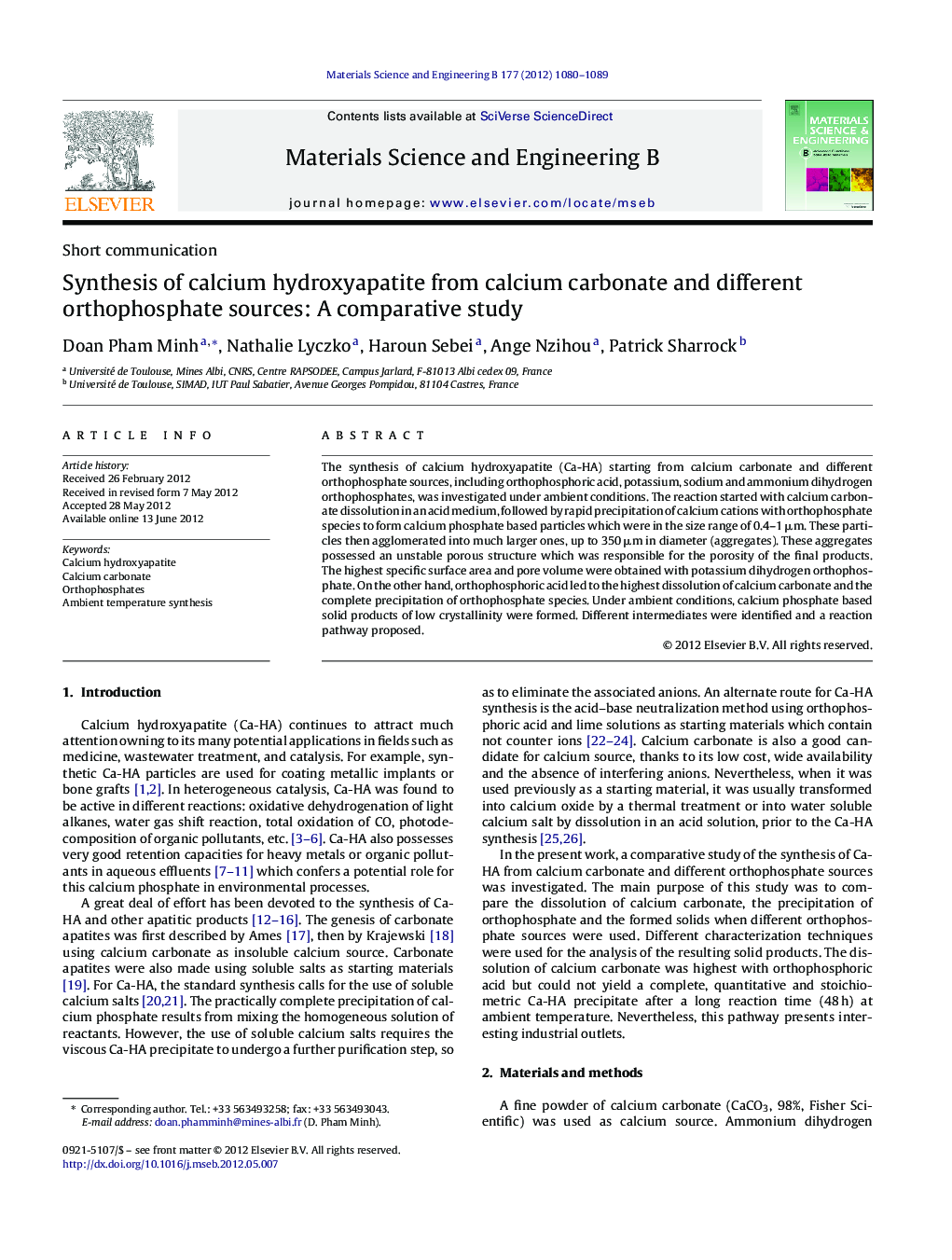| Article ID | Journal | Published Year | Pages | File Type |
|---|---|---|---|---|
| 1529270 | Materials Science and Engineering: B | 2012 | 10 Pages |
The synthesis of calcium hydroxyapatite (Ca-HA) starting from calcium carbonate and different orthophosphate sources, including orthophosphoric acid, potassium, sodium and ammonium dihydrogen orthophosphates, was investigated under ambient conditions. The reaction started with calcium carbonate dissolution in an acid medium, followed by rapid precipitation of calcium cations with orthophosphate species to form calcium phosphate based particles which were in the size range of 0.4–1 μm. These particles then agglomerated into much larger ones, up to 350 μm in diameter (aggregates). These aggregates possessed an unstable porous structure which was responsible for the porosity of the final products. The highest specific surface area and pore volume were obtained with potassium dihydrogen orthophosphate. On the other hand, orthophosphoric acid led to the highest dissolution of calcium carbonate and the complete precipitation of orthophosphate species. Under ambient conditions, calcium phosphate based solid products of low crystallinity were formed. Different intermediates were identified and a reaction pathway proposed.
Graphical abstractFigure optionsDownload full-size imageDownload as PowerPoint slideHighlights► Calcium hydroxyapatite was synthesized from CaCO3 and four orthophosphates. ► Only H3PO4 led to the complete precipitation of orthophosphate species. ► H3PO4 was also the most efficient for calcium dissolution. ► Reaction pathway was dissolution-precipitation accompanied by agglomeration step.
